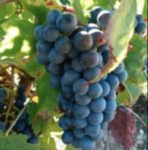We were talking about food and wine pairing…How to pair a dish?!
How to pair a dish?! All you need to know about the Wine & Food Pairing art
 First it is important to note that although there are principles and rules for this, it is essential to have pleasure, enjoy and eat / drink what you like.
First it is important to note that although there are principles and rules for this, it is essential to have pleasure, enjoy and eat / drink what you like.
For an evening, a dinner…Well! A successful meal is needed? A good meal (cooked with love) and a good wine adapted to what has been concocted. The problem is that the quality and even the excellence of the two products is not enough to make a good marriage/pairing. The hardest part is to find a right agreement between the dishes and select wines… and this, of course, without mistakes.
My poet side will still do its thing but I personally like to say a wine allying a dish is like a wedding:
“If you do not have any common points and complementarity, it is sure that this will end up in divorce. Furthermore neither party should to dominate the other “.
In this article I have not intended to replace the advice of a sommelier or any other “famous wine guru”. I just wanted to bring you some basic acknowledgments and advices acquired during my many meetings, tasting. And you will see more clearly about the art to provide a wine to a dish here.
Should we always respect the Wine & Food Pairing tips ?
 Yes and no. Of course we must not make the association that spoil the food or the wine. But on the other side as a French sommelier said “the best deal/Wine & Food Pairing it’s to drink what you like! “.
Yes and no. Of course we must not make the association that spoil the food or the wine. But on the other side as a French sommelier said “the best deal/Wine & Food Pairing it’s to drink what you like! “.
Personally, I would also advise to leave the common stereotypes “red meat = red wine, fish / shellfish = dry white wine and sweet / soft = foie gras, sugar cakes.” It is true that these are good bases that have proven their effectiveness. However the world’s cuisines and wines panels of different flavors are so rich, it would be a shame to limit associations.
The three major types of alliances food and wine
In the first place we must not lose sight of the harmony of flavors is not the only thing that should come into play for the pairings and wine. There is also the texture, acidity, bitterness, “sweetness”, the mash, the size and length.
Pay attention also to sauces dishes. Indeed trim and sauces, and even spices used to decorate plates are important for achieving a perfect wedding! We do not serve the same wine in a tomato sauce cod on a lemon sauce or a beurre blanc sauce cod.
 When choosing wine he’ll have to choose between complementarity pairing (win-win): that is to say, a wine that will fit in perfectly with a dish because it will bring so-called complementary flavors that will securities the flavors of the dish and nectar. The similarity pairing: in which the dish and the wine will present common notes (example: Citrus Chicken with a white wine with citrus notes). To simplify, simply marry a wine whose flavors are found in the flat. Last chance the pairing of opposition: that is to say, the search for unity, interactions between a wine and a dish that are seemingly at odds taste (eg oysters and Sauternes).
When choosing wine he’ll have to choose between complementarity pairing (win-win): that is to say, a wine that will fit in perfectly with a dish because it will bring so-called complementary flavors that will securities the flavors of the dish and nectar. The similarity pairing: in which the dish and the wine will present common notes (example: Citrus Chicken with a white wine with citrus notes). To simplify, simply marry a wine whose flavors are found in the flat. Last chance the pairing of opposition: that is to say, the search for unity, interactions between a wine and a dish that are seemingly at odds taste (eg oysters and Sauternes).
Few ideas agreements to illustrate my point
- A Sauternes or Coteaux de Saumur (provided it is thin and does not overload the mouth sugar) with sushi and other Asian cuisines (Thai, Chinese, Japanese, Indian)
- A pink Champagne or Crémant (sparkling wine) developing notes of red fruits on a raspberry pie
- A quickly tannic red wine but also fruity, flowery (why not) wine without too much acidity to match with some fish such as bluefin tuna (marinated raw, cooked), cod in tomato sauce or monkfish with bacon / tomato sauce.
- White wines limestone slot (like a Chablis) with oysters, seafood
- A two chocolate tart with a Banyuls
- Caviar with white white white or black (Champagne or Crémant de Bordeaux)
- A Brunello di Montalcino with a beef carpaccio with pesto and parmesan with pasta or eggplant / parmesan
- A red Irouleguy with squid ink or axoa
- …
Interaction wine / food. What can happen?
 Lots! Yes you tell me that answer does not help you very much! Specifically six types of reactions are possible. Each being in a certain extent unpredictable … except have already tested.
Lots! Yes you tell me that answer does not help you very much! Specifically six types of reactions are possible. Each being in a certain extent unpredictable … except have already tested.
1) The first and the most sought after is a perfect interaction! A perfect balance! The both are revealed and put the both in value. This is perfect! You are a Chef!
2) The selected wine can bring new flavors to the food.
3) Pairing between nectar and condiment creates a new flavor …. unfortunately unpleasant
4) The dish or any of its ingredients enhances flavor, a characteristic of the wine.
5) The opposite of point 4 is also possible …. the food can diminish / weaken one of aromas
6) A wine can blur a dish by the power / intensity of its flavors or any of its characters. It is the same for a dish that can hide a wine by the power of its aromas.
– Attention to sweet wine on your plate …. it would be a shame to feel just sugar for all the meal.
– Also avoid tannins with iodized notes that are quite pronounced (which is not the case for all the fish). It is a rule almost unanimously accepted. However, some amateurs and professionals like to combine some iodine foods (fish, shellfish and crustaceans such as large lobster and “langouste”) with reasonably tannic red wines. Examples: American lobster with a quickly tannic Bordeaux Graves or a Gigondas. A perch fillet cooked in red wine sauce can be paired with a Saumur-Champigny red wine.
 – If you want to open only one bottle for a dinner, keep in mind that red wine is generally more matches easily on a fish that a white wine with meats.
– If you want to open only one bottle for a dinner, keep in mind that red wine is generally more matches easily on a fish that a white wine with meats.
– Promote regional pairing …. they are not there by chance!
– In some cases where the sauce brings too heavy, it may be worthwhile to balance the dish with a wine has high acidity (or sparkling wine).
– Beware of internet recipes … they can add some ingredients
– Generally the more intense is the taste of the dish, the more the wine must be raised
– Think outside the classics pairing!
– … Without forgetting the traditional agreements from time to time (no, the last two points are not mutually exclusive)
Ingredients combine complicated (but not impossible)
- Garlic
- Marinated anchovies
- Smoked Herring
- Cottage cheese
- Citrus acids
- Vinegar non deglazed
- Wasabi
- Mustard (not cooked)
- Pepper (good there everyone understands why …. With a burning mouth is difficult to feel anything)
- Dishes with 150 flavors …. (Salty, sweet, sour, spicy, etc. ….)
- The bitter vegetables (no tannic wines above. Prefer white or rosé)
- Gels (a safe bet sparkling!)
- Smoked food too powerful
- very fresh cheese
 It is there an order to drink wine during a meal?
It is there an order to drink wine during a meal?
To enjoy maximum amount of wines during a meal you should serve in the right order. So be careful with your choice of dishes. Follow certain rules:
1) Do not start with a sweet wine risk overloading your taste buds with sugar. Opt instead for a dry white wine or sparkling.
2) Enjoy a dry white wine before a red wine
3) Drink a young red wine before older
4) Enjoy the lighter or easier before a more full-bodied and complex wine. Otherwise you may not taste/feel (or less feel) the first wine.
Finally I would say that there are no inevitable agreements. Just as the tasting is a subjective art, in alliance, taste, appetites each, habits and culture influence and determine our assessment of flavors.
Bon appetit! Enjoy !
Jonathan Choukroun Chicheportiche






